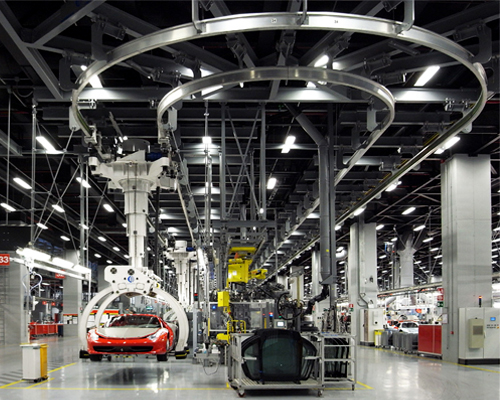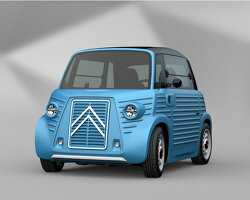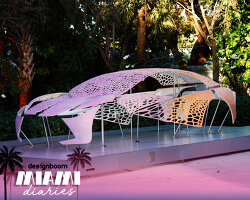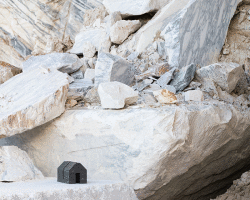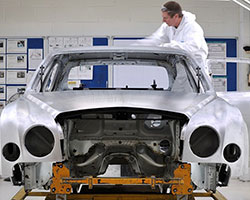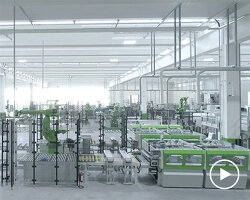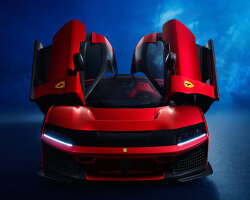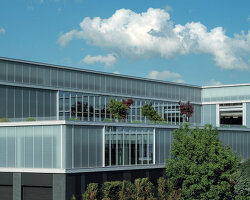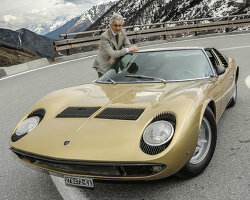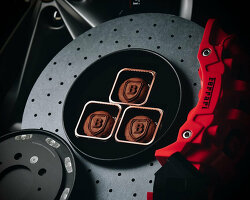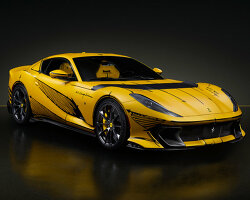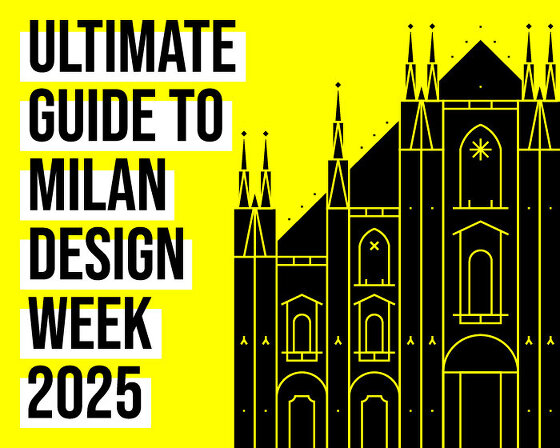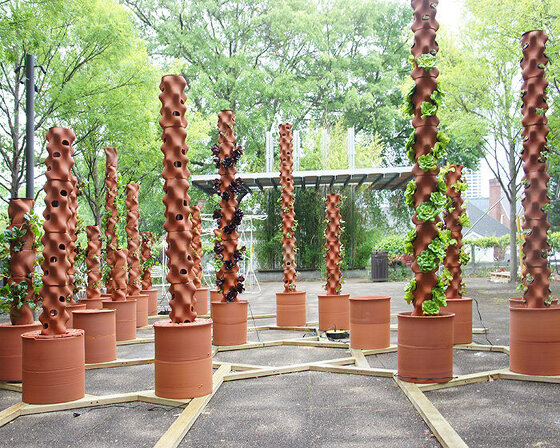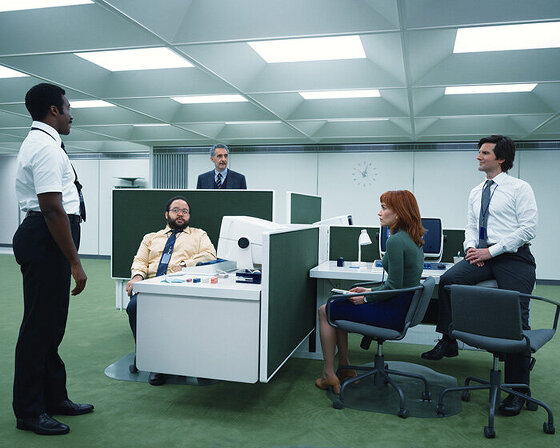founded in 1929 as a racecar sponsor and manufacturer, ferrari has been producing hand-finished road vehicles since 1947. the ferrari factory was designed by french architect jean nouvel and modernized beginning in 1997 by company president luca di montezemolo. all ferraris in the world continue to be produced exclusively on the maranello campus, where every ferrari is produced custom to order, and all installations are performed by hand. as a result, the company produces approximately 10 to 12 cars a day.
designboom visited the ferrari factories and is excited to bring you a three-part behind-the-scenes look at the vehicle’s’ production. we start in this article near the end of the process, at the ‘new assembly line’ building, bringing you later this week a visual tour of the engine manufacturing facilities and a look at the ferrari design process.
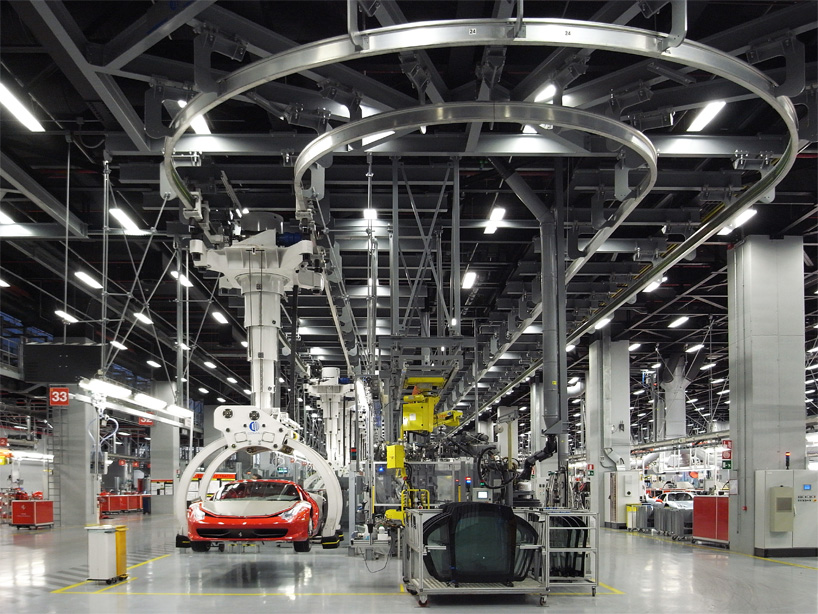 looking in on the ‘new assembly line’image © designboom
looking in on the ‘new assembly line’image © designboom
the most recent addition to the ferrari plant, the ‘new assembly line’ is the site of the last stages of a vehicle’s creation. the building occupies over 21,000 square meters of space, divided across two floors into assembly lines for 8 and 12 cylinder cars, as well as a test area, prototype development facility, and offices and meeting rooms. the space was designed by jean nouvel himself with a roof of reflective plates and bright skylights, offering openness and light despite the mechanical transport system and heavy technology housed within.
the bodywork and vehicle chassis of ferrari vehicles are constructed at the carrozzeria scaglietti in nearby modena before being painted and finished at a separate building on the maranello complex. the vehicle bodies, along with the fully tested engine and gearbox modules from the engine assembly facility next door, ultimately all arrive at the ‘new assembly line’ building. here, with each step completed by hand by ferrari technicians, the engines are installed into the body, the chosen top panel is bolted in, and the selected seating materials, dashboards, and any special inserts are installed, a journey that takes each vehicle approximately three working days from start to finish, the last steps of a manufacturing process that altogether takes about three weeks.
each car travels along the course with a specification sheet indicating everything about its design, for technicians’ reference. v-8 and v-12 cylinder cars are produced along separate assembly lines, the former requiring an average of about one half hour of work at each station and the latter closer to an hour. the ferrari factory, organized under montezemolo’s ‘formula uomo‘ initiative for employee health and satisfaction, operates on only a single 8am to 5pm shift each day.
the carousel system in the ‘new assembly line’ makes use of pincer machines designed by italian robot manufacturers comau that permit easy access to all sides of the vehicle. the cars are placed at the best height for each worker, and can be rotated to permit work to be done on its underside.
 view looking up at raised cars along the production lineimage © designboom
view looking up at raised cars along the production lineimage © designboom
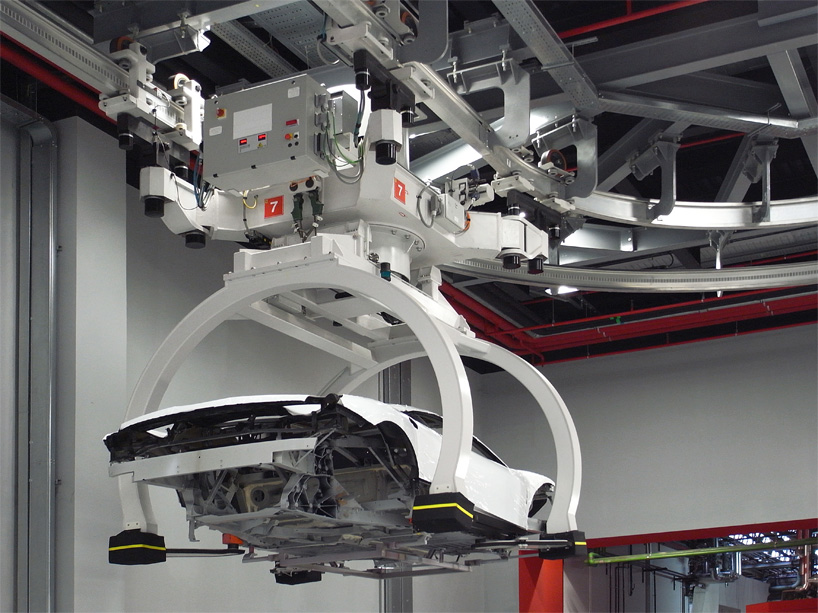 closer view of a body being moved along the trackimage © designboom
closer view of a body being moved along the trackimage © designboom
 image © designboom
image © designboom
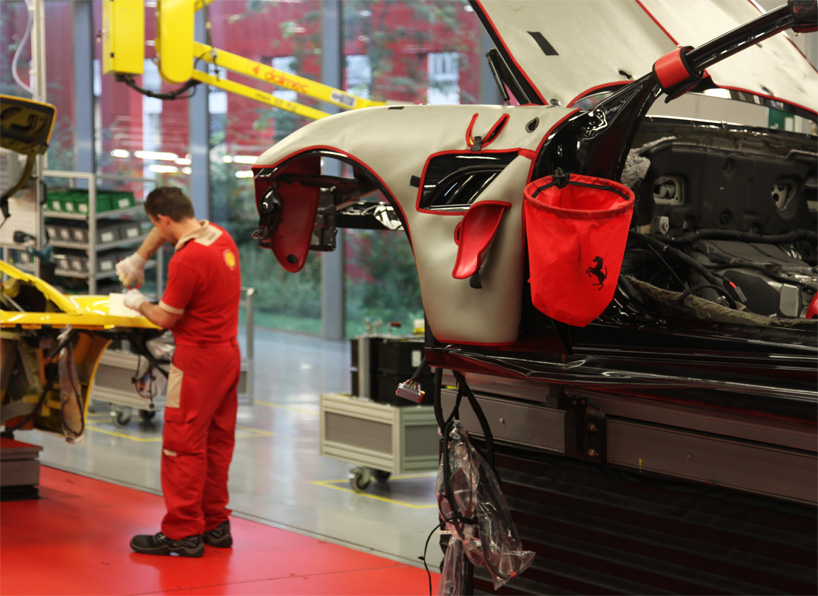 image © designboom
image © designboom
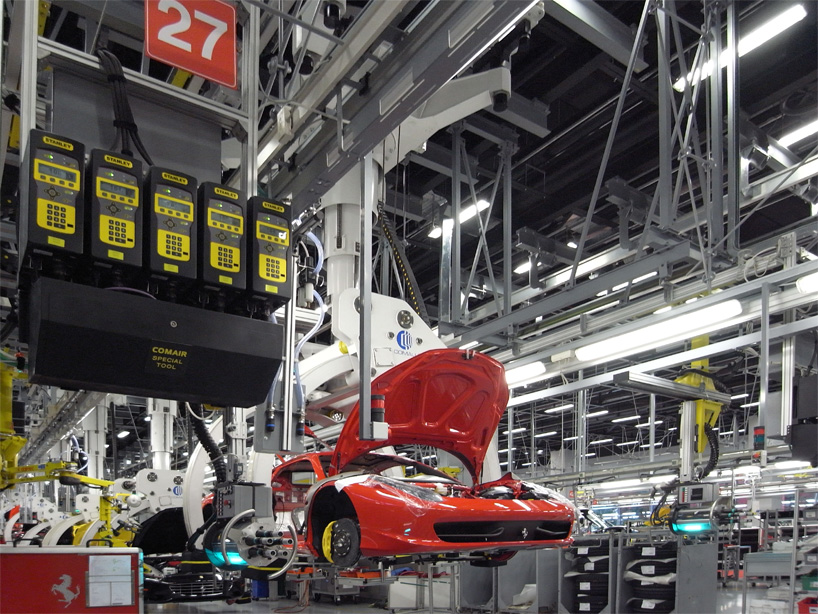 image © designboom
image © designboom
 image © designboom
image © designboom
 image © designboom
image © designboom
 comau robots hoist, hold, and rotate the vehicles along the two-story production lineimages © designboom
comau robots hoist, hold, and rotate the vehicles along the two-story production lineimages © designboom
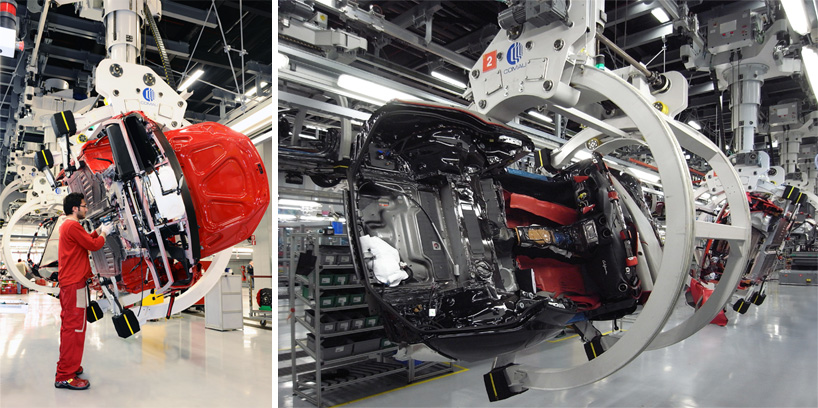 themachines permit technicians to control the height and rotation of thevehicle, permitting even the undersides to be worked on with easeright image © designboom
themachines permit technicians to control the height and rotation of thevehicle, permitting even the undersides to be worked on with easeright image © designboom
 additional work being completed to the side of the lineimage © designboom
additional work being completed to the side of the lineimage © designboom
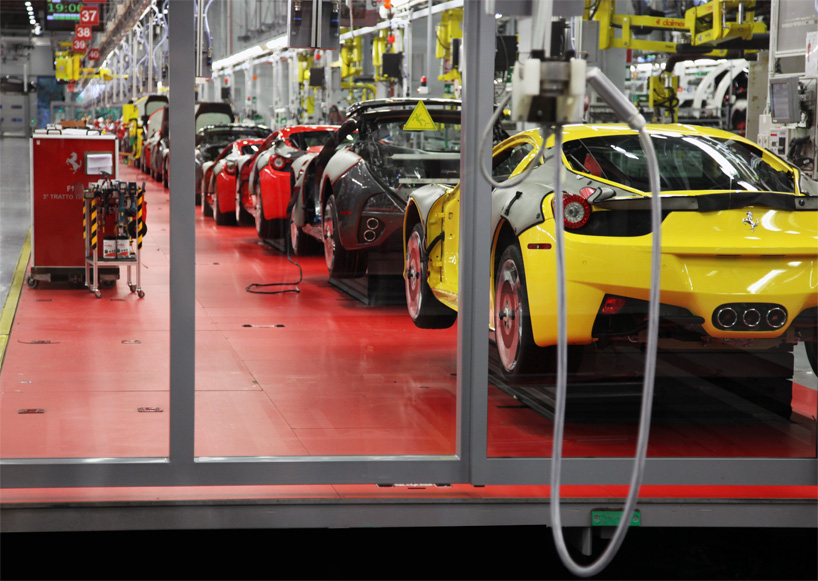 cars in a range of stages of productionimage © designboom
cars in a range of stages of productionimage © designboom
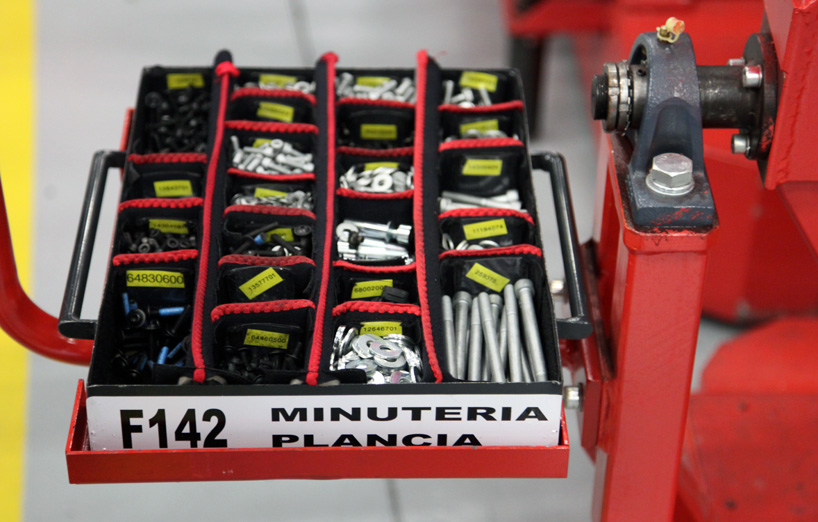 washers, screws, and other small hardwareimage © designboom
washers, screws, and other small hardwareimage © designboom
 image © designboom
image © designboom
 technicians at workimage © designboom
technicians at workimage © designboom
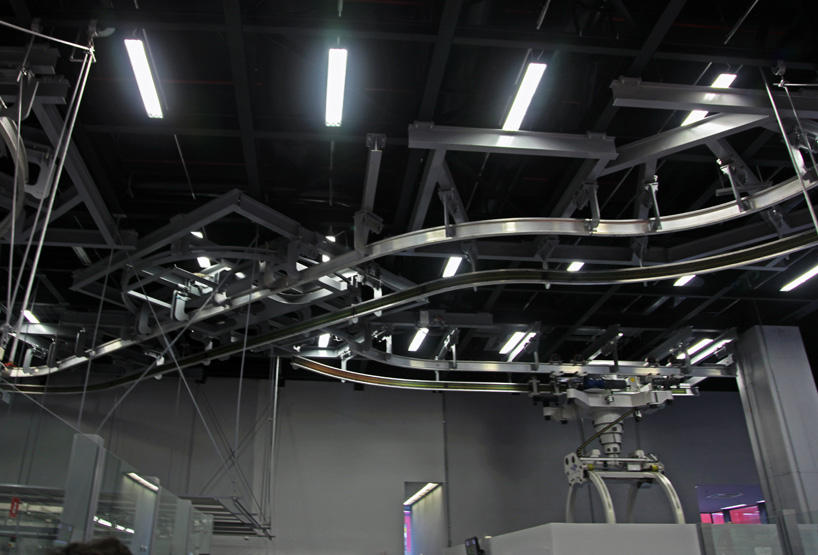 view at far end of the assembly line, looking towards the ceiling, at the transport system that moves cars between levelsimage © designboom
view at far end of the assembly line, looking towards the ceiling, at the transport system that moves cars between levelsimage © designboom
 image © designboom
image © designboom
 althoughthe engine manufacturing process involves the use of robots forproduction, all testing, final assembly, and installation is done byhandimage © designboom
althoughthe engine manufacturing process involves the use of robots forproduction, all testing, final assembly, and installation is done byhandimage © designboom
 image © designboom
image © designboom
 a separate building houses the fully automated painting and finishing centers, where the bodies are completed before arrival at the assembly centerimage courtesy ferrari
a separate building houses the fully automated painting and finishing centers, where the bodies are completed before arrival at the assembly centerimage courtesy ferrari  a finished vehicle at the entrance of the buildingimage © designboom
a finished vehicle at the entrance of the buildingimage © designboom
next in the series: designboom’s feature on ferrari’s mechanical workshop where engine parts are manufactured, followed by our tour of the ferrari design facilities.
